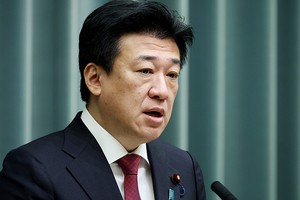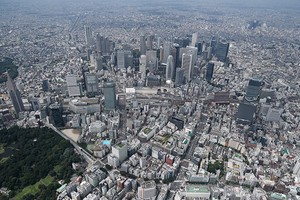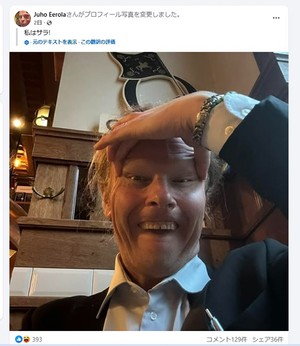By NOBUHIKO TAJIMA/ Staff Writer
December 23, 2023 at 18:04 JST
 A Patriot surface-to-air missile deployed at an Air Self-Defense Force base in Okinawa Prefecture (Asahi Shimbun file photo)
A Patriot surface-to-air missile deployed at an Air Self-Defense Force base in Okinawa Prefecture (Asahi Shimbun file photo)
In a hugely significant policy shift for pacifist Japan, the government approved revisions that will allow for the export of finished weapons like Patriot missiles.
The changes that got the nod from the Cabinet of Prime Minister Fumio Kishida were made possible by the Three Principles on Transfer of Defense Equipment and Technology. The National Security Council later approved revisions to the implementation guidelines for those principles.
In 1976, the government banned weapons exports in principle, citing war-renouncing Article 9 of the Constitution.
But in 2014 when Shinzo Abe was prime minister, the government scrapped the three principles regarding weapons exports and replaced them with the current principles on the transfer of defense equipment and technology.
On Dec. 22, the government quickly took advantage of the revisions and approved the export of finished Patriot surface-to-air missiles to the United States.
The latest revisions did not require changing any laws, so no deliberations were held in the Diet. The contents of the revisions were decided on by 12 lawmakers from the ruling Liberal Democratic Party and junior coalition partner, Komeito, in close-door sessions.
In effect, the public was kept out of the loop for what constitutes a major policy course change by the government.
While the three principles were left untouched, revisions to the implementation guidelines threw open the door for exports of not just defense equipment components, but finished products, as well as lethal weapons to a much wider range of nations.
For example, defense equipment parts manufactured in Japan under a licensing agreement with a U.S. company could only be exported to the United States in the past.
Now, not only can finished products be exported, but defense equipment can be shipped to any nation that has a licensing agreement with Japan to manufacture domestically.
Japanese companies manufacture 79 products under licensing agreements with companies in eight nations: the United States, Britain, France, Germany, Italy, Belgium, Sweden and Norway. The finished products can now be exported to all eight nations.
Restrictions were placed on the export of licensed products to a third nation by requiring prior consent from Japan. Nations involved in military conflict, such as Ukraine and Israel, are barred from receiving such weapons.
But as in the case of the Patriot missiles, the export to the United States is meant to replenish the American inventory. U.S. stocks have been depleted because it exported so many missiles to Ukraine to support its fight against Russia. Even if the Japanese-made missiles are never sent to Ukraine, having those missiles in the U.S. arsenal frees up other missiles for export to Ukraine.
The implementation guidelines also limited defense equipment exports to non-lethal ones in the five categories of minesweeping, transportation, surveillance, monitoring and rescue.
Under the revisions, lethal equipment for those five categories can now be exported as well as lethal equipment needed for self-protection.
Non-lethal equipment can also be exported to all nations facing invasion under international law, not just Ukraine.
Although the revisions also allowed the export of parts developed jointly with other nations, further discussions will be held within the ruling coalition from early next year about allowing the export of finished products developed jointly. Komeito lawmakers have been hesitant about such exports.




















A peek through the music industry’s curtain at the producers who harnessed social media to help their idols go global.
A series based on diplomatic documents declassified by Japan’s Foreign Ministry
Here is a collection of first-hand accounts by “hibakusha” atomic bomb survivors.
Cooking experts, chefs and others involved in the field of food introduce their special recipes intertwined with their paths in life.
A series about Japanese-Americans and their memories of World War II